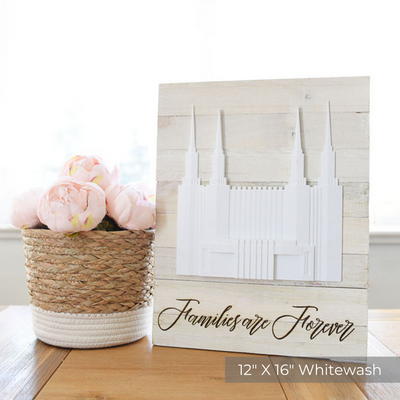Putting On the Armor of God
By Lauren Madsen
Sometimes experiences just stick with you. Something seemingly small happens, and it hits you in a big way. You know from that moment on, you will live the rest of your life remembering exactly how that moment made you feel.
As I approach my fortieth birthday and reminisce with friends about our high school days, I am amazed at the many things I remember happening that they don’t remember at all. And vice versa. There were a lot of great memories, and of course some tough ones too. The memory that keeps coming back to me lately was such a simple and brief moment, and yet I think back on it all the time.

One weekend during my senior year, my friend’s parents offered to take our little group out on the lake in their boat. After a full day of cliff jumping and waterskiing, the mild sunburns started to show up, and we decided it was time to head home. As we started piling into the car, my friend’s parents grabbed bags from the front seat and quickly went to change from their dry swimsuits into their garments and clothes before our two hour drive home.
While we waited in the backseat, I distinctly remember thinking: They didn’t even want to wait 'til they got home to put their garments back on. These are two people who must feel deeply about their covenants. I want to be like that. Temple garments were more than fabric to them. Much more. I thought about how I would likely be making covenants and wearing temple garments myself within the next few years.
In the July 2001 Liahona Russell M. Nelson wrote: “Wearing the temple garment has deep symbolic significance. It represents a continuing commitment. Just as the Savior exemplified the need to endure to the end, we wear the garment faithfully as part of the enduring armor of God. Thus we demonstrate our faith in Him and in His eternal covenants with us.” It seems like often when we talk about the armor of God we talk about actions we take that fortify and strengthen our spirits. I love the idea of viewing the temple garment as part of the armor of God that is to be literally put on our bodies.
Carlos E. Asay wrote of the battles we face and the protection provided by the temple garment in the September 1999 Liahona: “The heavy armor worn by soldiers of a former day, including helmets, shields, and breastplates, determined the outcome of some battles. However, the real battles of life in our modern day will be won by those who are clad in a spiritual armor—an armor consisting of faith in God, faith in self, faith in one’s cause, and faith in one’s leaders. The piece of armor called the temple garment not only provides the comfort and warmth of a cloth covering, it also strengthens the wearer to resist temptation, fend off evil influences, and stand firmly for the right.” When dressing for battle, a soldier would want to put on every piece of protection possible. I like to think of wearing the temple garment as part of preparing for battle—the battle for my soul. I don’t want to leave any part of my armor behind.
The wearing of the temple garment is personal, and for various reasons wearing them is easy for some individuals and difficult for others. Something that helps me is to cultivate the mindset that wearing the temple garment is an opportunity, a blessing rather than a burden, a privilege rather than an inconvenience. It is an attitude I am grateful to have witnessed all those years ago as a teenager at a lake in central Utah.











Leave a comment